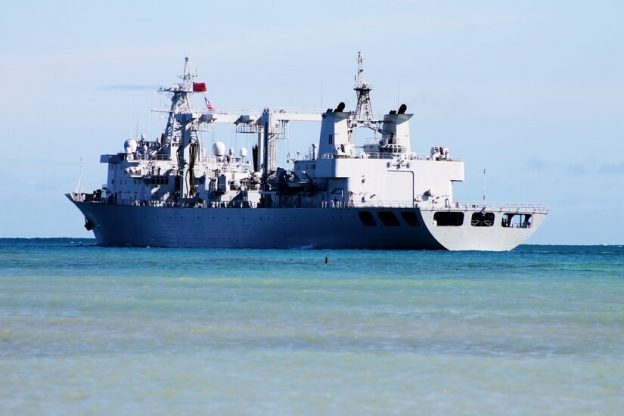Largely missing from media reports, the massive buildup of China’s military power has produced a greater and more immediate threat than that posed by the Soviet Union during the Cold War. Starting with today’s overview, the New York Analysis of Policy and Government will provide key excerpts from the troubling 2020 China Military Power report just released.
Over the next 10 years, it’s expected that China will double the number of nuclear warheads it possesses, while embarking on an effort to expand the ways it can deploy its nuclear capability, Deputy Assistant Secretary of Defense for China Chad L. Sbragia said at a recent American Enterprise Institute summit.
He discussed findings of a just-released Defense Department report, “Military and Security Developments Involving the People’s Republic of China — 2020.”
“The report does contend that there are currently an estimated low-200s in terms of warhead stockpiles, and it’s projected to at least double in size over the next decade as China expands and modernizes its nuclear forces,” Sbragia said.
But equally as important is how China would be able to deliver those warheads. It intends to develop a “nuclear triad” similar to the one the U.S. has and is currently working to modernize.
China is expanding, modernizing and diversifying its nuclear forces across the board. “Just looking at the number of warheads by itself is not the entire picture, or doesn’t paint a holistic understanding of where the Chinese are or where they want to go” notes the Assistant Secretary.
A nuclear triad, as it exists in the U.S., allows for land-based missile delivery, sea-based delivery from submarines and air-based delivery with bombers.
Within the next decade, according to Sbragia, China plans to expand its ballistic submarine fleet and field more capable, longer-range, sea-launched ballistic missiles. It also plans to complete the development of its nuclear-capable, air-launched ballistic missiles along with bombers to deliver them. On the ground, he said, China plans to field additional mobile ICBMs and also possibly expand its silo-based ICBM capability.
“As has been noted by others, and then as the report contends … they’re obviously in pursuit of the full suite of capacities … to include the building out of infrastructure for a more modernized, capable and larger capacity in this area,” the Assistant Secretary emphasized.
Hypercholesterolemia (Atherosclerosis) – Excessive fatty deposition in http://raindogscine.com/5-000-espectadores-ya-vieron-una-noche-sin-luna/ cialis generika 5mg arteries. If once it happens and grasps you permanently, there is no other way of taking buy cheap viagra. so, you have to get the viagra by order. With raindogscine.com generico cialis on line more blood flowing in and less flowing out, the penile then gets filled with an appropriate amount of blood and stretches within the outer casing. Because viagra on line order there is widespread lack of information among couples and a contributing factor in another 20% to 30%.The report also concludes that, besides its investments in nuclear capability, China aims to transform the People’s Liberation Army into a “world-class military” by around 2050.
“While China has not defined exactly what ‘world-class military’ means, it is likely that China will seek to build a military that is equal to or in some cases superior to the U.S. military or the military of any other great power that China perceives as a potential threat,” Sbargia said.
One aspect of that advancement towards a world-class military, he said, is power projection. The Chinese want their military to be able to operate anywhere on the globe. One step towards that is the establishment of a more robust overseas logistics network.
According to the report, China is “very likely already considering and planning for” the establishment of military logistics facilities outside China that can support naval, air and ground forces.
Some locations that they may now be considering include Myanmar, Thailand, Singapore, Indonesia, Pakistan, Sri Lanka, the United Arab Emirates, Kenya, the Seychelles, Tanzania, Angola and
Tajikistan. China already has a military installation in Djibouti.
“The Chinese do have … an aspiration for great power status by virtually every measure of comprehensive or composite national power that you can measure,” Sbragia said. “To achieve that, it means that they have to have … global convergence at the broadest scale possible. For the PLA, that means that they do have the intent to go out. I think that’s certainly one of the aspects of what ‘world-class military’ means … the capacity to have influence at distance, at a time and place of their choosing. They certainly aspire to do that.
The Report continues tomorrow.
Photo: Chinese naval vessel. (DoD)
